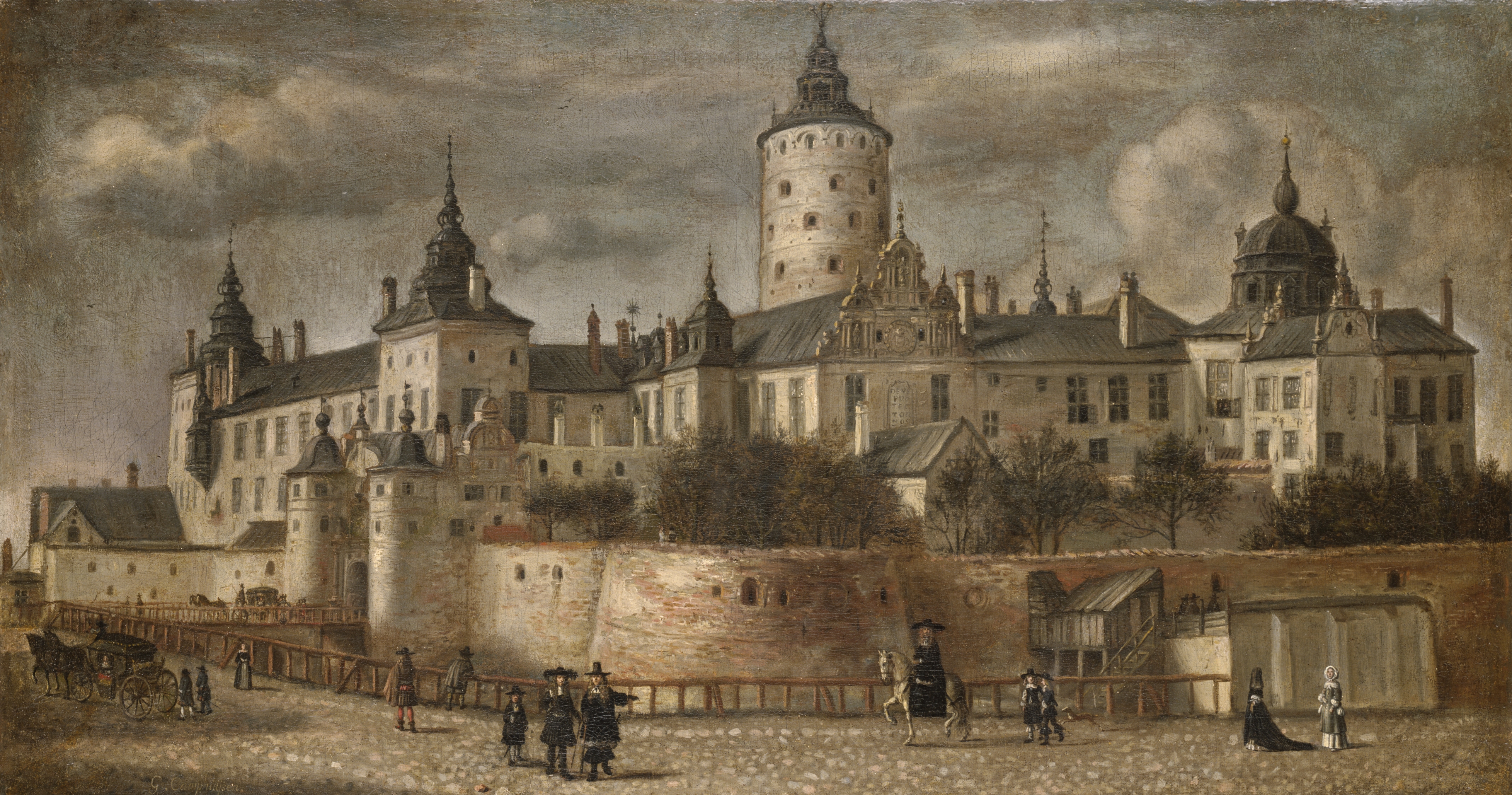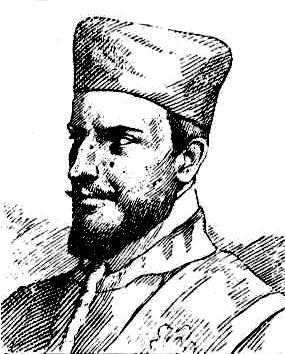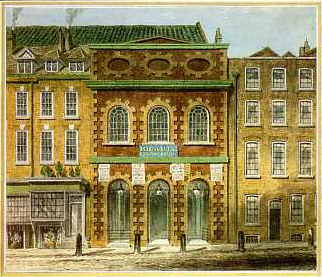|
Antonia Coresi
Antonia "Tonia" Coresi (fl. 1655 – fl. 1674) was an Italian opera soprano.Zilli, Anna, Drottning Kristinas sångerskor: en omvälvande kraft i Roms musikliv 1655-1689', Nordic Academic Press, Lund, 2019 She was a primadonna at the Opera in Venice between 1655 and 1672. She was married to the opera singer Nicola Coresi. Between 1670 and 1674, she was engaged by Christina, Queen of Sweden in Rome. Queen Christina founded the first public theatre- and opera house, the Teatro Tordinona. The Teatro Tordinona was inaugurated in January 1671 with the opera ''Scipione Affricano'' by Francesco Cavalli, with Antonia Coresi as Scipione and Medea, and Angelica Quadrelli as Sofonisba and Isifile. The performance was a sensation, because women were formally banned from performing onstage in the city of Rome; and while this ban was overlooked in the private theatres of the nobility, the Teatro Tordinona was meant to be a public theare, albeit in a special position because it was priv ... [...More Info...] [...Related Items...] OR: [Wikipedia] [Google] [Baidu] |
Christina, Queen Of Sweden
Christina ( sv, Kristina, 18 December (New Style) 1626 – 19 April 1689), a member of the House of Vasa, was Queen of Sweden in her own right from 1632 until her abdication in 1654. She succeeded her father Gustavus Adolphus upon his death at the Battle of Lützen in 1632, but began ruling the Swedish Empire when she reached the age of eighteen in 1644. The Swedish queen is remembered as one of the most learned women of the 17th century. She was fond of books, manuscripts, paintings, and sculptures. With her interest in religion, philosophy, mathematics, and alchemy, she attracted many scientists to Stockholm, wanting the city to become the "Athens of the North". The Peace of Westphalia allowed her to establish an academy or university when and wherever she wanted. In 1644, she began issuing copper in lumps as large as fifteen kilograms to serve as currency. Christina's financial extravagance brought the state to the verge of bankruptcy, and the financial difficulties caus ... [...More Info...] [...Related Items...] OR: [Wikipedia] [Google] [Baidu] |
Teatro Tordinona
The Tor di Nona is a neighborhood in Rome's ''rione'' '' Ponte''. It lies in the heart of the city's historic center, between the ''Via dei Coronari'' and the Tiber River. Its name commemorates the Torre dell'Annona, a mediaeval tower which once stood there and was later converted into one of the city's most important theatres, the Teatro Tordinona, later called the Teatro Apollo. History Early history The Torre dell'Annona was a medieval stronghold of the Orsini family and from the early 15th century acted as a pontifical prison. Prisoners included Benevenuto Cellini who experienced the dungeon's lightless cells, one of which was known as "the pit", Beatrice Cenci, and Giordano Bruno who was imprisoned here before being burned alive in Campo de' Fiori. In 1659-1660, it was used during the infamous Spana Prosecution.Monson, Craig A.: The Black Widows of the Eternal City: The True Story of Rome’s Most Infamous poisoners' Theatre When the New Prison (''Le Carceri Nuove'') wa ... [...More Info...] [...Related Items...] OR: [Wikipedia] [Google] [Baidu] |
Francesco Cavalli
Francesco Cavalli (born Pietro Francesco Caletti-Bruni; 14 February 1602 – 14 January 1676) was a Republic of Venice, Venetian composer, organist and singer of the early Baroque music, Baroque period. He succeeded his teacher Claudio Monteverdi as the dominant and leading opera composer of the mid 17th-century. A central figure of Venetian musical life, Cavalli wrote more than forty operas, almost all of which premiered in the city's theaters. His best known works include ''Ormindo'' (1644), ''Giasone'' (1649) and ''La Calisto'' (1651). Life Cavalli was born at Crema, Lombardy, Crema, then an Domini di Terraferma, inland province of the Venetian Republic. He became a singer (boy soprano) at St Mark's Basilica in Venice in 1616, where he had the opportunity to work under the tutorship of Claudio Monteverdi. He became second organist in 1639, first organist in 1665, and in 1668 ''Kapellmeister, maestro di cappella''. He took the name "Cavalli" from his patron, Venetian nobleman ... [...More Info...] [...Related Items...] OR: [Wikipedia] [Google] [Baidu] |
Scipione
''Scipione'' ( HWV 20), also called ''Publio Cornelio Scipione'', is an opera seria in three acts, with music composed by George Frideric Handel for the Royal Academy of Music in 1726. The librettist was Paolo Antonio Rolli. Handel composed ''Scipione'' whilst in the middle of writing ''Alessandro''. It is based on the life of the Roman general Scipio Africanus. Its slow march is the regimental march of the Grenadier Guards and is known for being played at London Metropolitan Police passing out ceremonies. Performance history ''Scipione'' had its premiere on 12 March 1726 at The King's Theatre, Haymarket. Handel revived the opera in 1730, but it did not receive another UK production until October 1967, by the Handel Opera Society. In Germany, ''Scipione'' was revived at the Göttingen International Handel Festival in 1937 and at the annual Handel Festival in Halle in 1965.Dean, Winton, "Handel's ''Scipione'' (October 1967). ''The Musical Times'', 108 (1496): pp. 902–904. Wit ... [...More Info...] [...Related Items...] OR: [Wikipedia] [Google] [Baidu] |
Medea
In Greek mythology, Medea (; grc, Μήδεια, ''Mēdeia'', perhaps implying "planner / schemer") is the daughter of King Aeëtes of Colchis, a niece of Circe and the granddaughter of the sun god Helios. Medea figures in the myth of Jason and the Argonauts, appearing in Hesiod's ''Theogony'' around 700 BCE, but best known from Euripides's tragedy ''Medea'' and Apollonius of Rhodes's epic ''Argonautica''. Medea is known in most stories as a sorceress and is often depicted as a priestess of the goddess Hecate. Medea plays the archetypal role of helper-maiden, aiding Jason in his search for the Golden Fleece by using her magic to save his life out of love. Once he finished his quest, she abandons her native home of Colchis, and flees westwards with Jason, where they eventually settle in Corinth and get married. Euripides's 5th-century BCE tragedy ''Medea'', depicts the ending of her union with Jason, when after ten years of marriage, Jason abandons her to wed King Creon's daugh ... [...More Info...] [...Related Items...] OR: [Wikipedia] [Google] [Baidu] |
Angelica Quadrelli
''Angelica'' is a genus of about 60 species of tall biennial and perennial herbs in the family Apiaceae, native to temperate and subarctic regions of the Northern Hemisphere, reaching as far north as Iceland, Lapland, and Greenland. They grow to tall, with large bipinnate leaves and large compound umbels of white or greenish-white flowers. Found mainly in China, its main use was for medicine. It shows variations in fruit anatomy, leaf morphology, and subterranean structures. The genes are extremely polymorphic. Some species can be found in purple moor and rush pastures. Characteristics ''Angelica'' species grow to tall, with large bipinnate leaves and large compound umbels of white or greenish-white flowers. Their large, sparkling, starburst flowers are pollinated by a great variety of insects (the generalist pollination syndrome), the floral scents are species-specific, and even specific to particular subspecies. The active ingredients of angelica are found in the roots and ... [...More Info...] [...Related Items...] OR: [Wikipedia] [Google] [Baidu] |
Maria Landini
Maria Landini ( 1668 – 22 June 1722) was an Italian soprano who began her career as a singer at the court of Queen Christina in Rome but was primarily active at the imperial court in Vienna from 1711 until her death. She created numerous soprano roles in operas and oratorios by Fux, Caldara, and her second husband, Francesco Bartolomeo Conti and was reputedly the highest paid musician in Vienna at the time.Sadie, Julie Anne (1998)''Companion to Baroque Music'' p. 250. University of California Press. '' Oesterreichisches Musiklexikon'' (2016)"Landini-Contini (Landini-Conti, La Conti, La Contini, La Landina, di Chateauneuf, detta Landini, di Castelnuovo), Maria" Retrieved 18 July 2016 . Life and career Landini's mother, Francesca Portui, was the maid of Queen Christina of Sweden and married to Francesco Landini, the captain of Christina's guards. However, Francesco Landini was not her real father. Maria was born from a relationship between her mother and the marquise Orazio Del M ... [...More Info...] [...Related Items...] OR: [Wikipedia] [Google] [Baidu] |
Angela Voglia
Angela "La Giorgina" Voglia (fl. 1671 – fl. 1714) was an Italian opera soprano.Zilli, Anna, Drottning Kristinas sångerskor: en omvälvande kraft i Roms musikliv 1655-1689', Nordic Academic Press, Lund, 2019 She was engaged by Christina, Queen of Sweden in Rome. In 1671 Christina founded the first public theatre in Rome, Teatro Tordinona, and employed several female stage artists despite the ban on women performing on stage in the city of Rome. Angela Voglia performed at the concerts arranged by Christina in her private court. She was involved in a number of scandals concerning her love affairs and was reputed to be a courtesan, but she was protected against the Papal authorities by the royal patronage of Christina. In 1686, the Pope reinforced the ban on women stage performers because of the scandal of the love affair between the Duke of Mantova and Angela Voglia. After the death of Christina in 1689, she continued as a concert singer, performing in the private homes of th ... [...More Info...] [...Related Items...] OR: [Wikipedia] [Google] [Baidu] |
Year Of Birth Missing
A year or annus is the orbital period of a planetary body, for example, the Earth, moving in its orbit around the Sun. Due to the Earth's axial tilt, the course of a year sees the passing of the seasons, marked by change in weather, the hours of daylight, and, consequently, vegetation and soil fertility. In temperate and subpolar regions around the planet, four seasons are generally recognized: spring, summer, autumn and winter. In tropical and subtropical regions, several geographical sectors do not present defined seasons; but in the seasonal tropics, the annual wet and dry seasons are recognized and tracked. A calendar year is an approximation of the number of days of the Earth's orbital period, as counted in a given calendar. The Gregorian calendar, or modern calendar, presents its calendar year to be either a common year of 365 days or a leap year of 366 days, as do the Julian calendars. For the Gregorian calendar, the average length of the calendar year (the mea ... [...More Info...] [...Related Items...] OR: [Wikipedia] [Google] [Baidu] |
Year Of Death Missing
A year or annus is the orbital period of a planetary body, for example, the Earth, moving in its orbit around the Sun. Due to the Earth's axial tilt, the course of a year sees the passing of the seasons, marked by change in weather, the hours of daylight, and, consequently, vegetation and soil fertility. In temperate and subpolar regions around the planet, four seasons are generally recognized: spring, summer, autumn and winter. In tropical and subtropical regions, several geographical sectors do not present defined seasons; but in the seasonal tropics, the annual wet and dry seasons are recognized and tracked. A calendar year is an approximation of the number of days of the Earth's orbital period, as counted in a given calendar. The Gregorian calendar, or modern calendar, presents its calendar year to be either a common year of 365 days or a leap year of 366 days, as do the Julian calendars. For the Gregorian calendar, the average length of the calendar year (the me ... [...More Info...] [...Related Items...] OR: [Wikipedia] [Google] [Baidu] |





